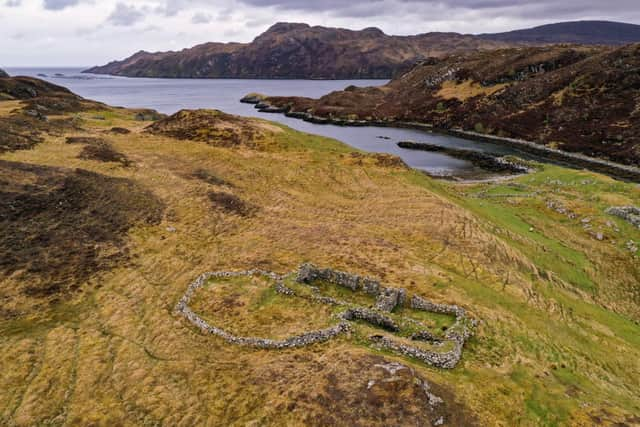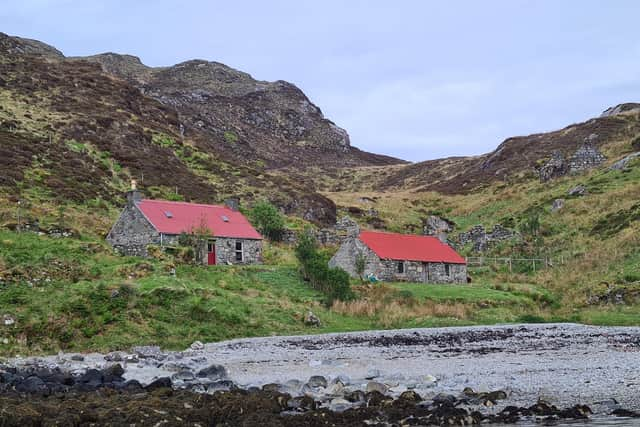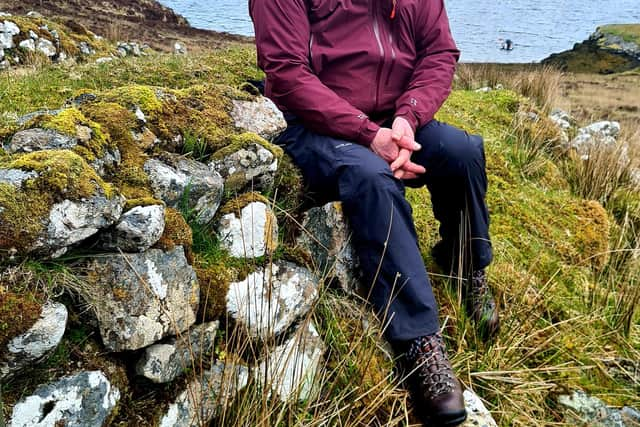Lost villages of the Outer Hebrides traced by descendants of those who called them home
Trusadh – Beatha air an Oir (Lost Villages), a new documentary by BBC ALBA, visits long-emptied landscapes of Uig and Paircs areas of Lewis as well as Harris for the programme.
Descendants of the crofters who once called the villages home are taken to the remains of houses and lazy beds that were at the heart of the once-thriving communities.
Advertisement
Hide AdAdvertisement
Hide AdThe return of relatives is an often emotional experience as they recount their memories of hard work, happiness and family life.


The reasons why people left – from the failure in the kelp industry to the Clearances and the promise of new jobs in the city and family reasons – are all explored.
Presenter Evelyn Coull Macleod, who is from the Lochs area of Lewis, said: “We heard the history and stories from six different villages and the various reasons people left these villages from lack of facilities, landlords' greed, a changing world and people who just wanted an easier life.
“For me personally though, we should never forget the hardship our ancestors suffered,” she said.


Buthanais in the south east of Lewis, which was abandoned in 1826 as part of the Pairc Clearances, is visited by John ‘Rusty’ Macdonald, whose great, great, great grandparents – Iain Campbell and Janet MacDougall – lived in the village.
There were eight houses and around 50 people in Buthanais at the time its residents were forced out following the collapse in the value of soap ash, which was made by burning kelp and used in glass and soap production.
Crofters earned £2 a tonne while landlords made £20, according to the documentary.
As prices for soap ash fell, sheep were moved on to the Pairc estate and people like Iain Campbell and his wife were removed.


Advertisement
Hide AdAdvertisement
Hide AdMr Macdonald, who is filmed sitting in the remains of the village, said: “There were no laws at that time. A crofter didn't exist. During the seaweed industry era some tried to emigrate to North America.
“New legislation came into force which stated that boat owners carrying passengers to America had to increase the fares.
“They were so high that nobody could afford to pay them.
"The people who wanted to emigrate couldn't get away. They were kept here.”
Stiomrabhaigh (Steimreway) on the east coast of Lewis is also visited. It was cleared in 1857 of 80 people, resettled in 1922 following the war and finally deserted in 1942.
Torquil Macleod returns to the township where his mother was one of the last people to leave. She was offered a cook’s job in a house in Pollokshields, Glasgow, where her sister was already employed.
Crossbost in the Lochs area of Lewis is also featured. Once home to just the tacksman, the only resident in 1843, more residents arrived following the clearances of Lemreway and Orinsay.
Katie MacInnes returns to Crossbost to see where her ancestors ended up – and lived under the shelter of their upturned boats.
Ms MacInnes said: “There was nothing in Crossbost when they arrived. There were no crofts for them. They lived on that shore beneath their boats, for two years.”
Advertisement
Hide AdAdvertisement
Hide AdTrusadh - Beatha air an Oir is available on BBC Alba via iPlayer
A message from the Editor:Thank you for reading this article. We're more reliant on your support than ever as the shift in consumer habits brought about by Coronavirus impacts our advertisers.
If you haven't already, please consider supporting our trusted, fact-checked journalism by taking out a digital subscription.
Comments
Want to join the conversation? Please or to comment on this article.
